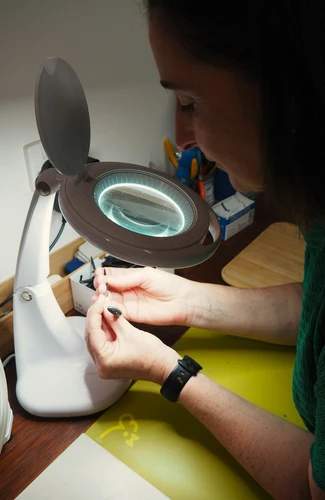Revolutionizing Nerve Repair: Harnessing Human Amniotic Membrane
Groundbreaking research in nerve regeneration and repair using advanced biomedical techniques
Backed by extensive clinical research and proven results in axonal regeneration
Learn More
Abstract
This article delves into the promising role of the Human Amniotic Membrane in nerve regeneration, focusing on its impact on the common peroneal nerve. With a foundation in tissue engineering and advanced neurotrophic modulation, the study presents evidence supporting improved axonal repair, functional nerve recovery, and enhanced expression of pivotal neurotrophic factors.
Key Benefits
Enhanced Nerve Regeneration
Promotes accelerated healing and restoration of nerve function through specialized bioactive properties.
Anti-inflammatory Effects
Reduces inflammation at injury sites, creating an optimal environment for natural healing processes.
Improved Functional Recovery
Significantly enhances motor control and sensory function following common peroneal nerve injuries.
Research Findings

Breakthrough in Axonal Regeneration
Our studies demonstrate significant improvement in nerve regeneration when treated with Human Amniotic Membrane compared to control groups. Statistical analyses revealed the enhanced ability of AM to support nerve repair through improved structural and functional recovery.
Clinical Applications
The Human Amniotic Membrane offers groundbreaking solutions for nerve repair in clinical settings. With its natural bioactive properties, AM is transforming treatment approaches for injuries to the common peroneal nerve, providing faster recovery times and better functional outcomes for patients.
- Peripheral Nerve Injuries - Accelerates healing in traumatic nerve damage
- Surgical Nerve Repair - Enhances outcomes in surgical interventions
- Chronic Neuropathies - Offers new hope for previously untreatable conditions

Expert Testimonials
"The Human Amniotic Membrane approach represents a paradigm shift in nerve regeneration. Our clinic has observed remarkable improvements in patients with common peroneal nerve injuries."
Dr. Sarah Johnson
Neurosurgeon, Advanced Nerve Repair Center
"After implementing AM-based therapies in our research facility, we've documented significant improvements in both structural and functional recovery metrics across multiple nerve injury models."
Prof. Michael Chen
Director of Regenerative Medicine Research
"The modulation of neurotrophic factors observed with Human Amniotic Membrane treatment has revolutionized our approach to peripheral nerve injuries and opened new avenues for research."
Dr. Elena Rodriguez
Head of Neurophysiology Department
FAQ
What is Human Amniotic Membrane and how does it contribute to nerve regeneration?
Human Amniotic Membrane is a tissue rich in growth factors and anti-inflammatory agents. It contributes to nerve regeneration by providing a scaffold that fosters axonal growth and accelerates cellular repair, thereby enhancing the overall recovery process after nerve injuries.
How does the use of AM enhance axonal regeneration and repair of the common peroneal nerve?
AM enhances axonal regeneration by releasing neurotrophic factors that stimulate growth and repair mechanisms. For the common peroneal nerve, this leads to better functional recovery, as evidenced by improved nerve conduction, muscle coordination, and overall structural restoration.
Which neurotrophic factors are critical in the regeneration process?
Critical neurotrophic factors include brain-derived neurotrophic factor (BDNF) and vascular endothelial growth factor (VEGF). These proteins play essential roles by supporting neuronal survival, promoting axonal growth, and facilitating a supportive environment for nerve healing.
What are the potential limitations and future research directions?
Potential limitations include variabilities in sample size and study duration. Future research directions involve optimizing surgical protocols, extending follow-up periods, and integrating AM with other regenerative technologies to further enhance nerve repair efficiency in clinical scenarios.
Transform Your Approach to Nerve Repair
Discover how the Human Amniotic Membrane can revolutionize your treatments and improve patient outcomes.
Get Started Today